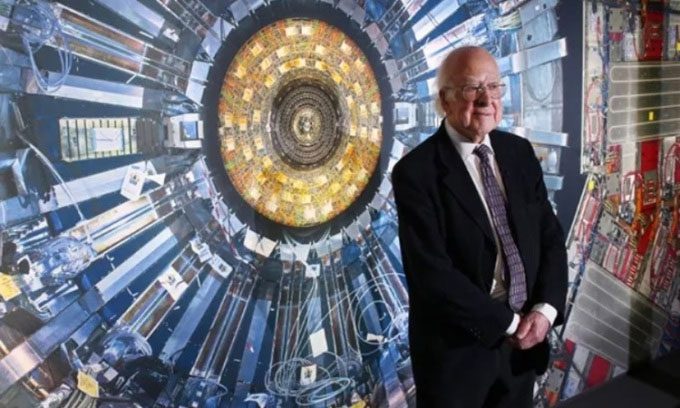Nobel Prize-winning physicist Peter Higgs, renowned for predicting the existence of the Higgs boson, has passed away following an illness.
Peter Higgs, the theoretical physicist who predicted the existence of the Higgs boson, died at the age of 94. The University of Edinburgh confirmed that the Nobel laureate passed away on April 8 after a period of illness. Higgs was an honorary professor at the university, where he began working in 1960 until his retirement in 1996, according to Live Science.

Peter Higgs stands in front of a photograph of the Large Hadron Collider at the Science Museum in London, England, in 2013. (Photo: Peter Macdiarmid).
Higgs is famous for his pioneering research predicting the mass of subatomic particles. He was awarded the Nobel Prize in Physics in 2013 alongside Belgian physicist François Englert for their work in the 1960s that predicted the existence of a particle that gives mass to other particles when they interact. This particle was named the Higgs boson. After 50 years of searching, the Higgs boson was finally discovered in 2012 using the Large Hadron Collider located on the border between France and Switzerland.
Born in Newcastle, England, on May 29, 1929, Higgs earned his PhD from King’s College London in 1954. A perplexing physics problem at the time was how fundamental particles like electrons and quarks acquire mass. In a paper published in 1964, Higgs proposed that these particles gain mass through interactions with a field, known as the Higgs field, which arises from the detectable Higgs boson.
However, the detection of the Higgs boson posed a significant challenge due to its rarity and the fact that it decays in less than a second. Researchers took decades of effort to finally trace the Higgs boson and validate Higgs’s hypothesis. The Higgs boson has a mass over 130 times that of a proton, yet it carries no electric charge and has no spin (angular momentum). Without it, other particles would be massless.
The Higgs boson is the final missing piece of the Standard Model, often referred to as the “God particle” because it helps scientists explain everything about subatomic particles and natural forces.


















































